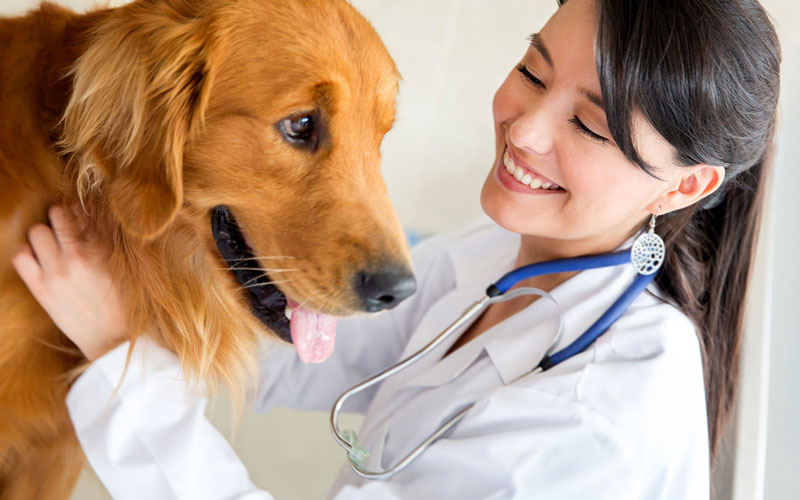Find out everything you need to know to keep your puppy healthy and happy. Tim Falk reports.
When you bring a new puppy home, you want to be able to give her the best possible care. But if you’ve never owned a dog before, it can be difficult to know exactly what you need to do to give your pup the best start in life.
From vaccinations and desexing to protecting against parasites, there’s a lot of information every new dog owner needs to wrap their head around — that’s why we’ve put together PETS magazine’s Puppy Vet Care 101.
Lesson 1: Finding a vet
The first step in your puppy’s health care quest is finding a vet you can trust. Sydney small-animal veterinarian Dr James Crowley says it’s important to find the right vet for all the same reasons it’s vital for people to find a doctor they like.
“We want someone who knows us, someone we can confide in, someone we can trust and build a relationship with,” he says. “It helps when you have this relationship with your vet and your puppy can get used to the same vet, which helps with anxiety within the clinic. Uniformity with your vet also helps if your puppy has a complicated medical history — it eliminates any confusion and bodes well for faster, more efficient treatment.”
Dr Joanna Paul from creatureclinic.com says that you, your puppy and your vet are a team working together to ensure your dog stays happy and healthy throughout puppyhood, the adult years and as a senior. “Your vet is your other family doctor, and together you will be making some pretty important decisions. If you don’t feel comfortable and at ease with a particular vet, it doesn’t mean they are a bad vet, but they may not be the right vet for you and your puppy,” she says.

Lesson 2: Vaccinations
Dr Jo says that all puppies should have a vaccination called a C3 at six to eight weeks of age before they go to their new homes. The C in C3 is for canine and the 3 is for the number of diseases the vaccination promotes immunity against. The three diseases are parvovirus, distemper and infectious canine hepatitis, and all of them can be deadly.
Generally, puppies then need two more vaccinations at 10-12 weeks and 14-16 weeks of age. “The most appropriate vaccine for most puppies at these times is the C5, which covers the same as the C3 with the addition of parainfluenza and bordetella, two pathogens that cause respiratory disease in dogs,” Dr Jo explains.
“The reason puppies require multiple vaccinations is that when they are born, they possess antibodies from their mother (maternal antibodies). The rate at which these disappear varies from puppy to puppy. Some will still have strong antibodies at the six-to-eight-week vaccination and while this will keep them safe, it will also prevent the injection from working. Other puppies will not, and so are already at risk from the deadly diseases.”
The window between the loss of maternal antibodies and when the vaccinations are protective is a dangerous time, and it’s not possible to predict when it will be for any individual pup. This is why most vets recommend not exposing your puppy to other dogs or potentially contaminated environments until at least two weeks after the second vaccination.
Lesson 3: Worms
Puppies should be wormed with an all-wormer at two, four, six, eight, 10 and 12 weeks of age, then monthly until they are six months old. After this, intestinal worming is only required every three months to be effective, but it is often more convenient and cost-effective to use an all-in-one product that also covers heartworm and possibly fleas. These products need to be used monthly for life.

Lesson 4: Fleas and ticks
There’s a huge range of products available to protect your puppy against fleas and ticks. “If you live on (or visit) the east coast of Australia where deadly paralysis ticks are present, your dog needs to be on a tick preventative. In areas without paralysis ticks, you just need to cover fleas,” Dr Jo explains. Always follow the directions for use on the product packaging carefully and when in doubt, ask your vet.
Lesson 5: Desexing
All pet puppies should be desexed. “Breeding should be left to reputable breeders and absolutely should not be done because your dog has a nice personality or you want the kids to experience the magic of new life. There are just too many homeless puppies in this world,” Dr Jo says.
Turning fear into fun
Sometimes your pup will need to endure a little bit of discomfort while at the vet, which can unfortunately cause some dogs to develop a phobia of visiting the vet. So if your puppy is a reluctant patient, it’s important to teach him that going to the vet can be a positive experience. One of the most effective things you can do is to practice touching your dog’s ears and feet and opening his mouth when he is relaxed and comfortable at home. These are things that need to be done during a physical examination and can be quite intimidating for those who aren’t used to it.
“The other thing that can make future vet visits much happier is to visit the clinic without actually visiting the vet,” Dr Joanna says. “Just wander into the waiting room and get your puppy a cuddle and some treats from the receptionists then go home — no bad experiences, just nice ones!”
“And, finally, the thing that makes the biggest difference in the dogs I see through the clinic is attending puppy preschool at your vet. These visits are so fun for your puppy and really set her up with positive associations. Most dogs that have attended puppy school with us bound through the door for their annual visits, tails wagging.”
Want more tips on how to keep your puppy safe and healthy? Get your paws on a copy of PETS Magazine here.


Leave a Reply